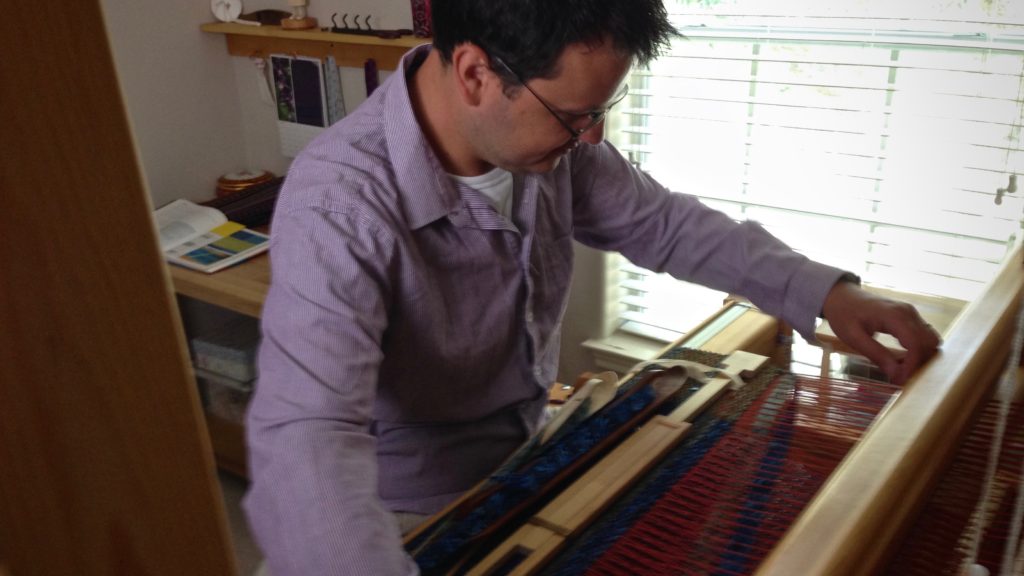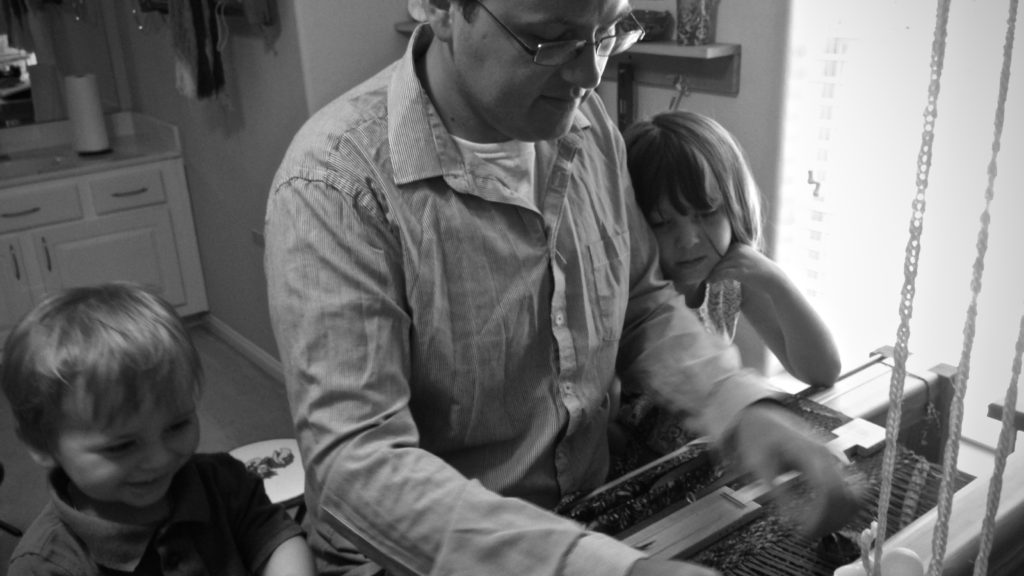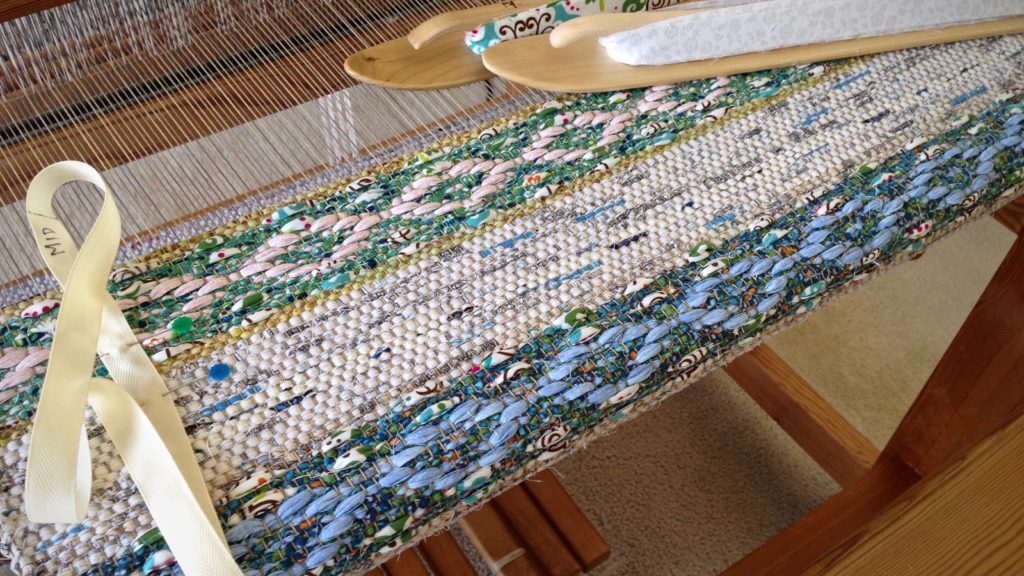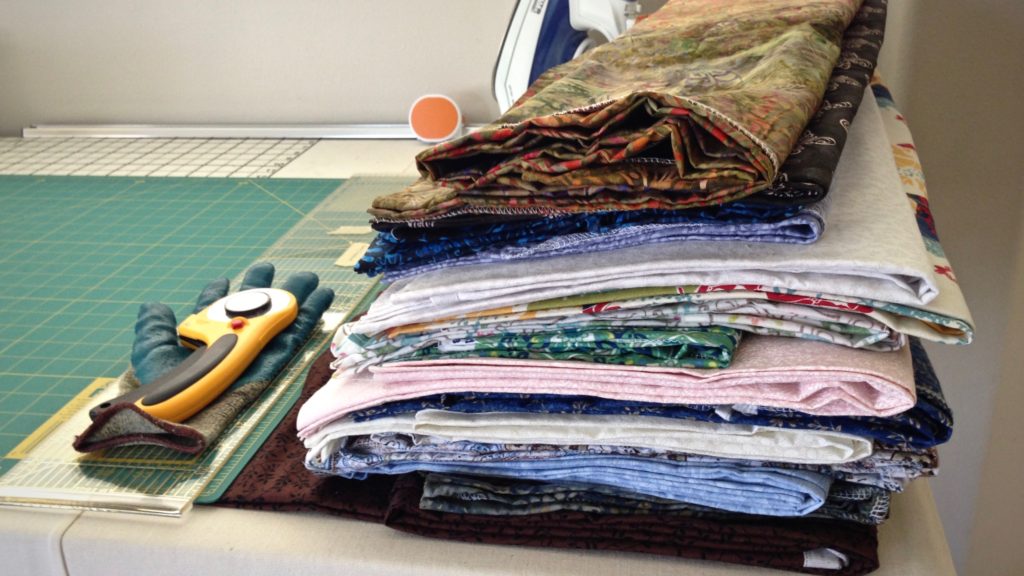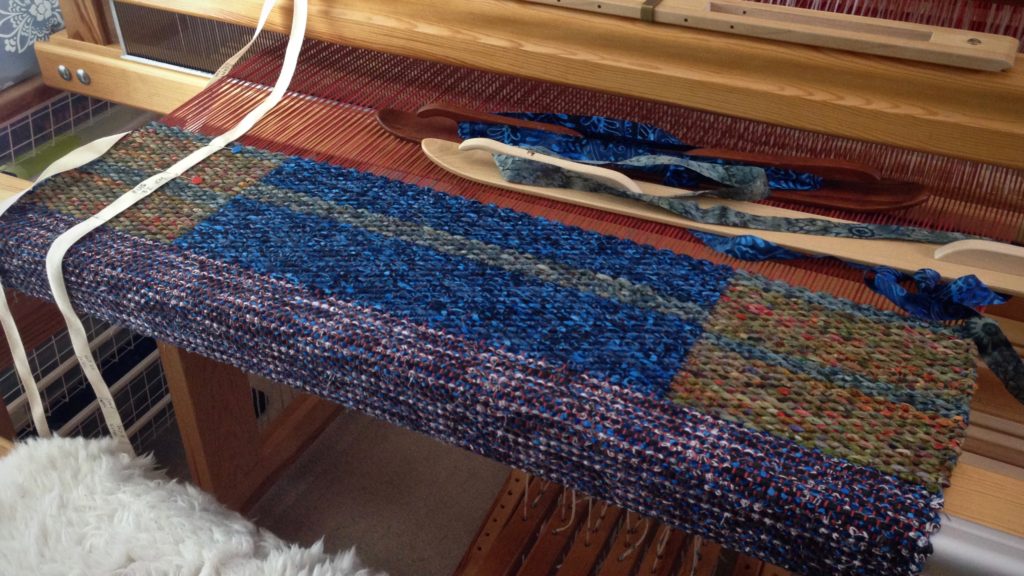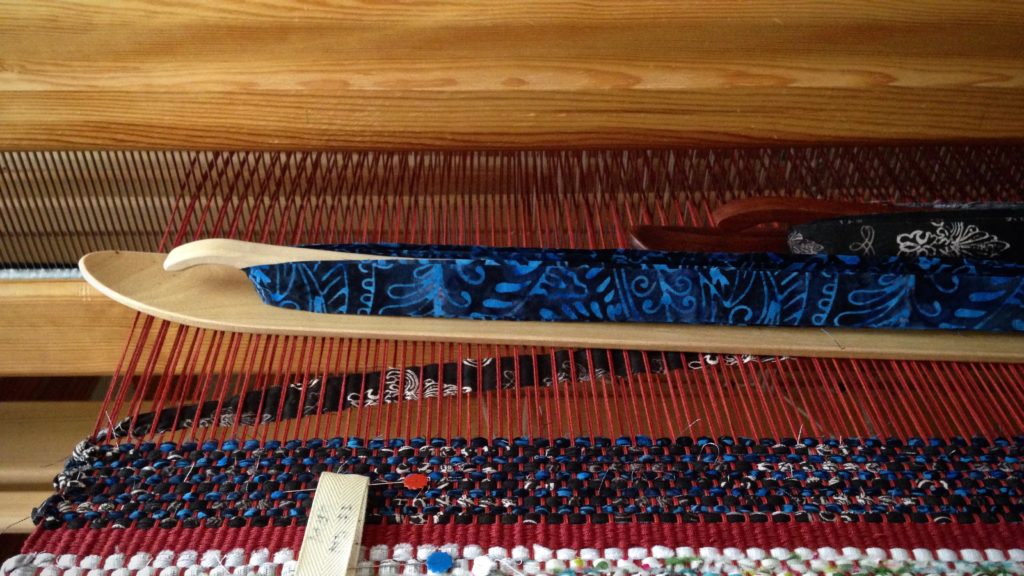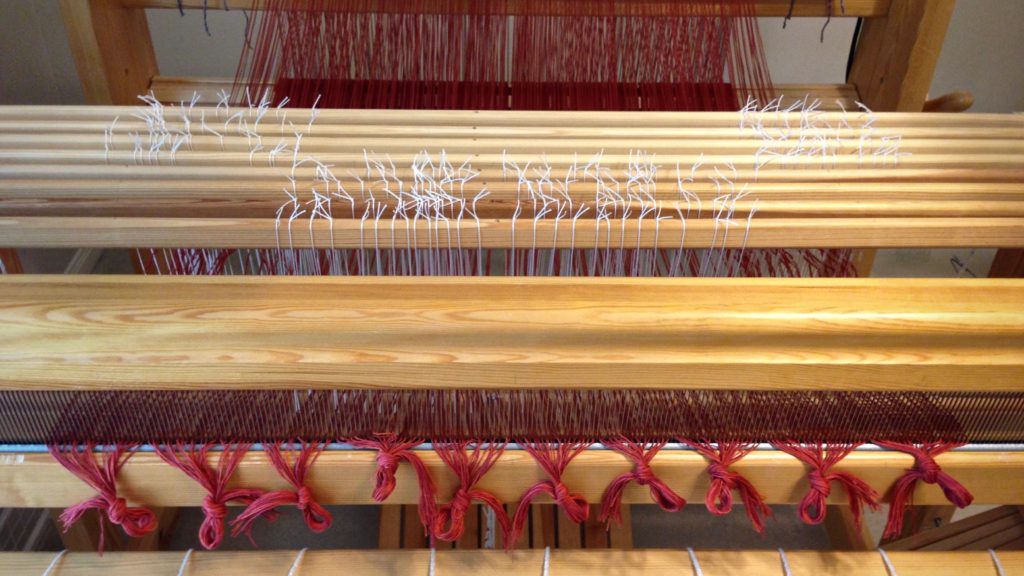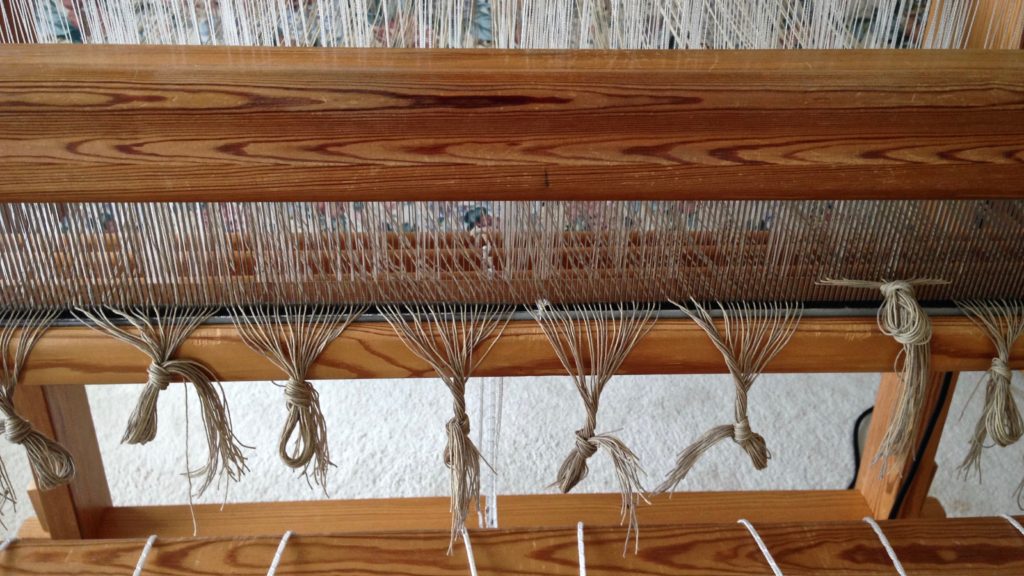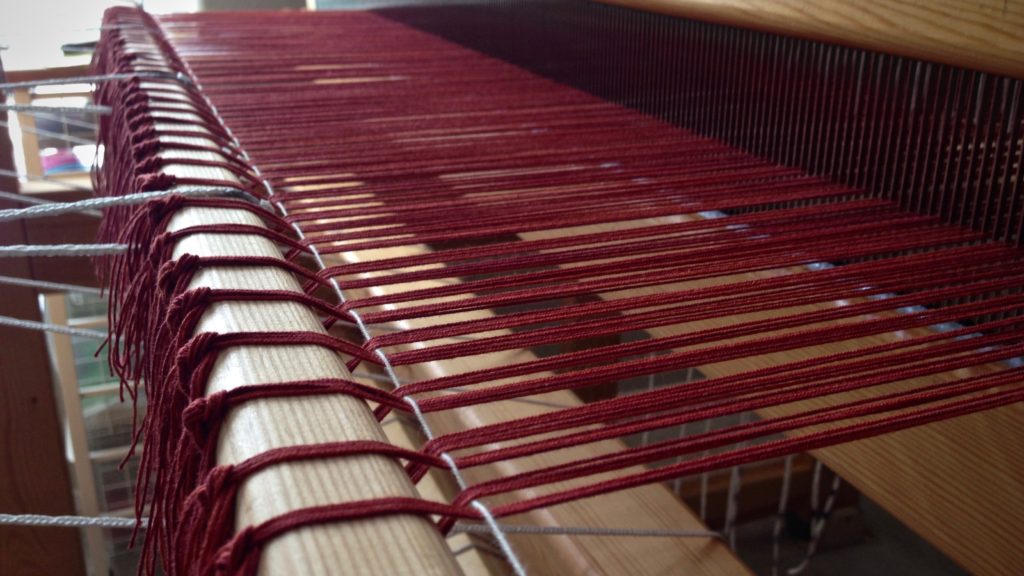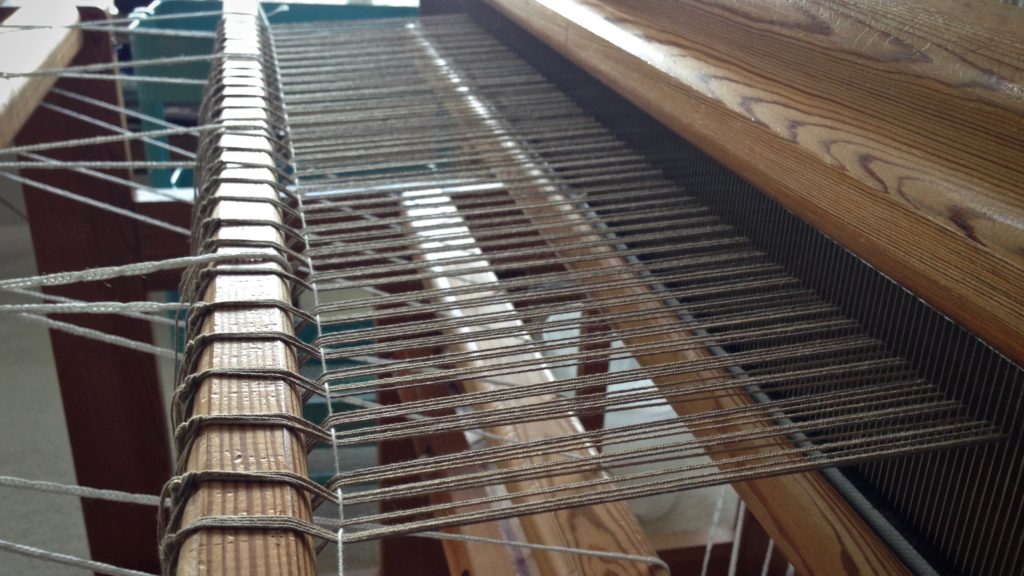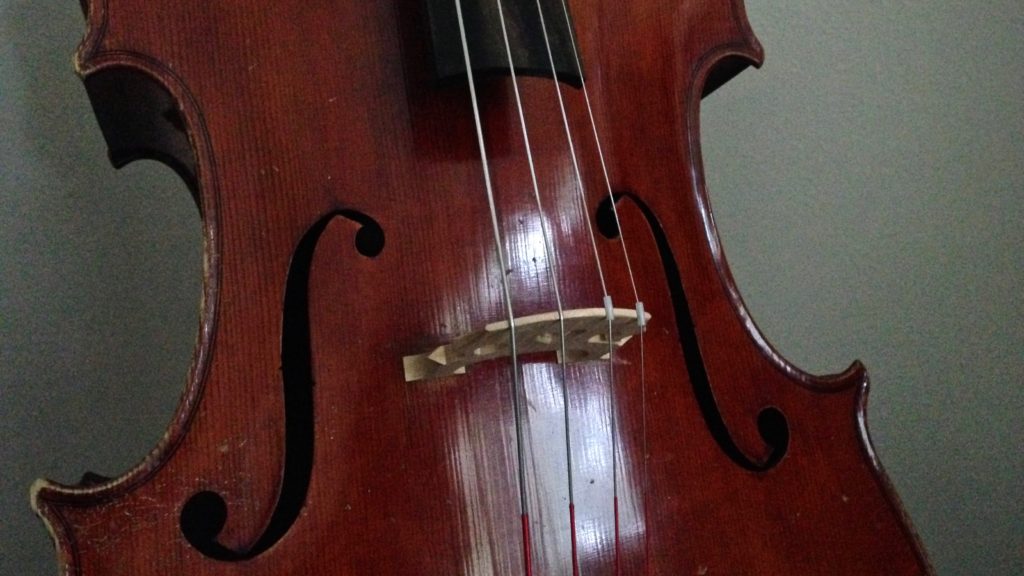It is not enough to be pretty; a good rag rug must also be sturdy. Four crucial steps give a rag rug the solid foundation it needs to get off to a great start, and to be ready for the strong beat required to make a rug that lasts.
How to Begin a Rag Rug
1 Space
Assuming there is a sample at the beginning of the warp, leave space after the sample. Leave about 4″ (10 cm) of empty warp. Then, using two warping slats, place one slat in each plain weave shed. The slats act as a spacer, and as a firm backstop for beating in the waste rags. (Leave about 8″ / 20 cm of space between each rug, from header to header.)
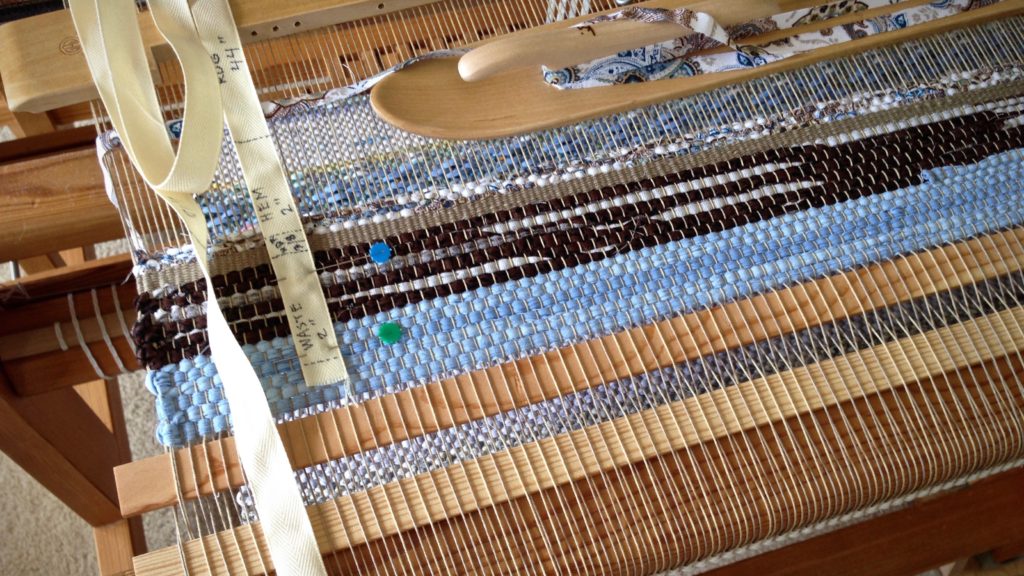
2 Waste rags
- a place to attach the temple
- prevent the header from unraveling when the rug is cut from the loom
Weave with scrap fabric strips, 1 – 2″ (2.5 – 5 cm) wide, for 2″ (5 cm). Attach the temple as soon as possible.
3 Header
- secures the rug weft
- gives the rug a firm edge
Use warp yarn to weave a 3/8″ (1 cm) weft-faced header. Arrange the weft in small arcs across the width of the shed. Treadle the next shed and beat in the weft.

4 Hem
- thinner rag weave, to be turned under and stitched
Cut fabric into narrow strips, 1/4″ (.5 cm) wide. Weave hem to desired length, with enough to fold under itself for finishing.
–Repeat the four steps in reverse order at the end of the rug.–
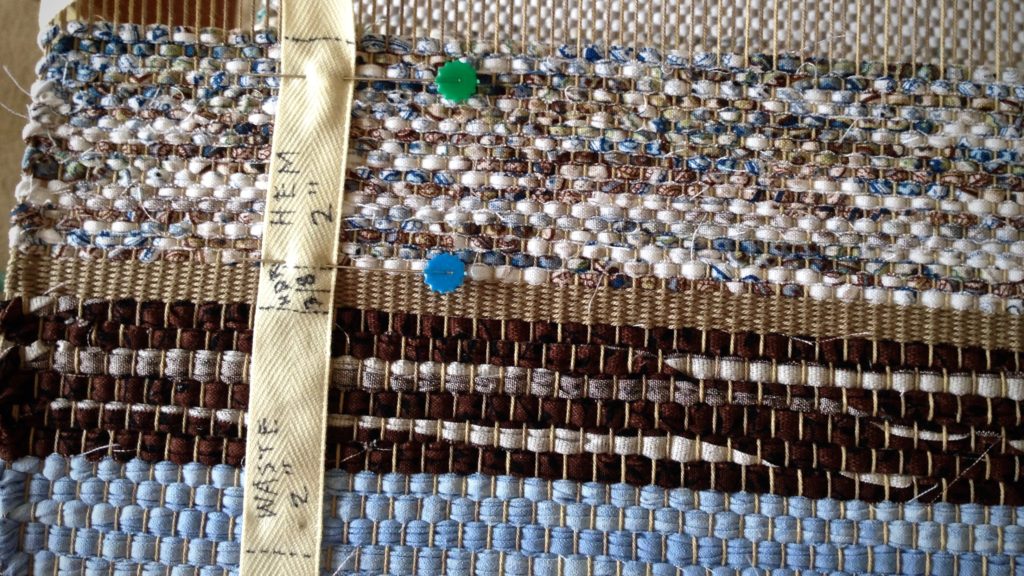
It takes courage to live by faith. Courage is the backbone against which life circumstances can push. Faith is knowing God has a higher purpose for the circumstances we find ourselves in. A rag rug with this firm starting point will not only look good, but be ready for a purpose. And so will we.
May you live courageously.
With faith,
Karen


